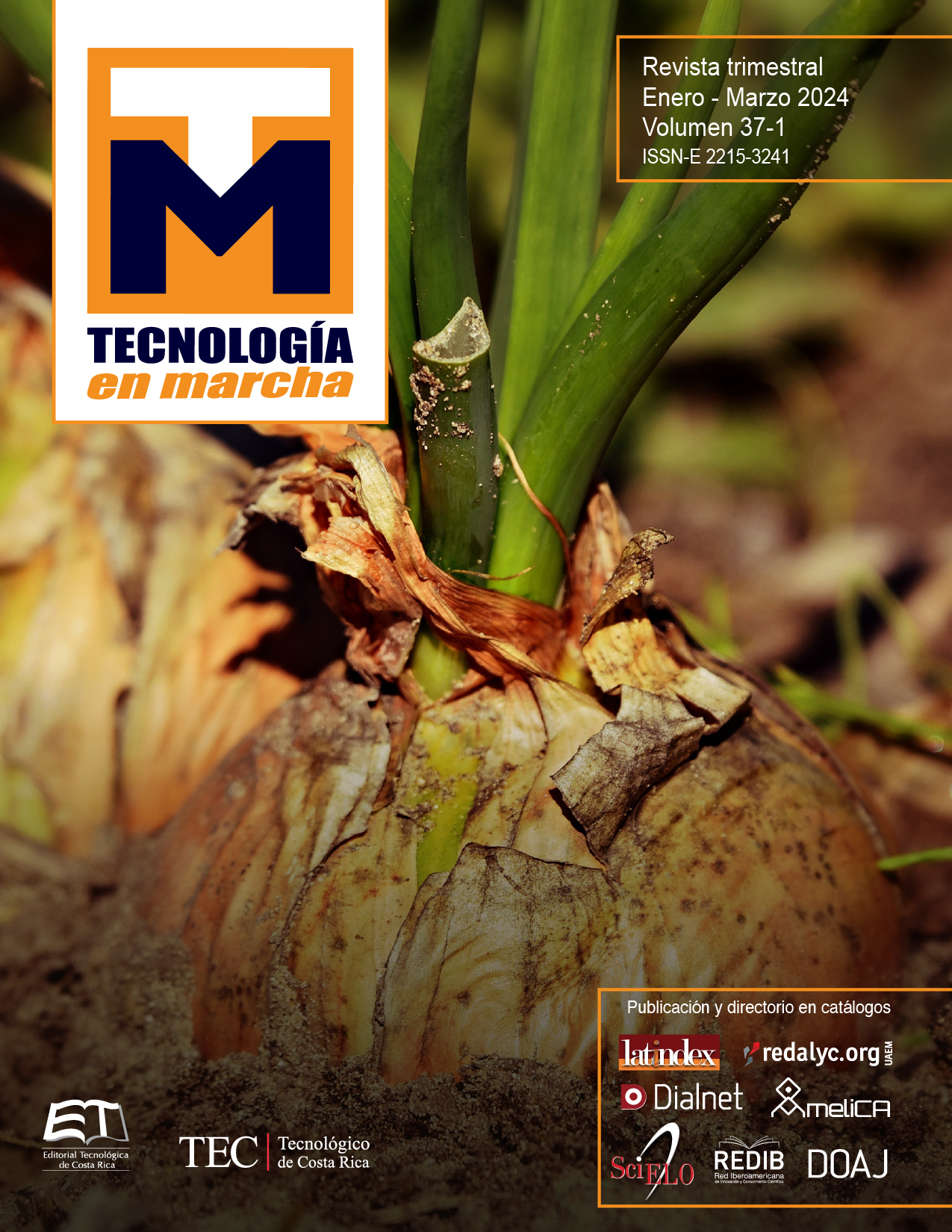Agroecological reconversion of moorlands in Colombia: proposal for a farm’s classification tool
Main Article Content
Abstract
For the year 2018, law 1930 comes into force, which proposes the agroecological productive reconversion of agricultural activities in the moorlands of Colombia. This law requires the inclusion of people living and maintaining agricultural activities in the moorland in the reconversion processes but does not propose mechanisms to recognize the different forms of agriculture that exist in this ecosystem. Therefore, a tool was designed with the objective of classifying farms based on 9 criteria and 16 indicators. As part of its validation, the tool was compared with a commonly used statistical classification method. With the proposed method, four farm typologies were obtained where 6% of the sample was classified as near agroecological, 35% as traditional farmer, 10% as incipient agro-industrial and 48% as transitional producer. Statistically, no significant differences were found between the traditional farmer and the incipient agro-industrial farmer because they use similar agronomic management. The proposed tool prioritizes worldview and rootedness as much as productivity, unlike the statistical method that reduced the criteria for classification by prioritizing productive indicators. The proposed tool makes it possible to define particularized routes at the farm scale and to plan transition processes in compliance with the law, but incorporating real local capacities, available knowledge, and the family's cosmovision of the farm's future.
Article Details

This work is licensed under a Creative Commons Attribution-NonCommercial-NoDerivatives 4.0 International License.
Los autores conservan los derechos de autor y ceden a la revista el derecho de la primera publicación y pueda editarlo, reproducirlo, distribuirlo, exhibirlo y comunicarlo en el país y en el extranjero mediante medios impresos y electrónicos. Asimismo, asumen el compromiso sobre cualquier litigio o reclamación relacionada con derechos de propiedad intelectual, exonerando de responsabilidad a la Editorial Tecnológica de Costa Rica. Además, se establece que los autores pueden realizar otros acuerdos contractuales independientes y adicionales para la distribución no exclusiva de la versión del artículo publicado en esta revista (p. ej., incluirlo en un repositorio institucional o publicarlo en un libro) siempre que indiquen claramente que el trabajo se publicó por primera vez en esta revista.
References
M. Santamaría, A. Areiza, C. Matallana, C. Solano, and S. Galán, Estrategias complementarias de conservación en Colombia. 2018.
S. Rubiano Galvis, “Protección de páramos y derechos campesinos. Aportes jurídicos y de política.,” reponame: Repositorio Institucional de Documentación Científica Humboldt Digital, 2015.
Ley 1939 de 2018 por medio de la cual se dictan disposiciones para la gestión integral de los páramos en Colombia., no. 1930. Colombia, 2018, p. 14. [Online]. Available: http://www.andi.com.co/Uploads/Ley-2018-N0001930_20180727.pdf
DANE, “Evaluaciones Agrícolas y Anuario Estadístico del Sector Agropecuario,” Bogotá, Colombia, 2019. [Online]. Available: https://www.agronet.gov.co/estadistica/paginas/home.aspx?cod=59
C. Sarmiento, A. Osejo, P. Ungar, and J. Zapata, “Páramos habitados: desafíos para la gobernanza ambiental de la alta montaña en Colombia. Biodiversidad en la práctica.,” Documentos de trabajo del Instituto Humboldt. Volumen 2 - Número 1 - 2017 - pp. 122-145., vol. 2 N° 1, pp. 122–145, 2017.
M. Mejia, Agriculturas para la vida: Un enfoque desde sistemas populares colombianos, 1er ed. Cali, Colombia, 1995.
R. H. de León-García, G. Thomas, and O. Castillo, “Caracterización y tipificación de pequeñas fincas doble propósito de la provincia de Bocas del Toro- Panamá,” Ciencia Agropecuaria, no. 29, pp. 13–40, 2018, [Online]. Available: http://scielo.sld.cu/scielo.php?script=sci_arttext&pid=S2224-79202017000200003
G. Escobar and J. Berdegué, Tipificacion De Sistemas De Produccion Agricola, 1er ed. Santiago de Chile: Red Internacional de Metodologia de Investigación de Sistemas de Producción, 1990.
M. Morales et al., Atlas de páramos de Colombia, 1er ed. Bogotá, Colombia: Instituto de Investigación de Recursos Biológicos Alexander von Humboldt, 2007.
Renaf, “Mercados Agroecológicos en Bogotá-Cundinamarca,” Bogotá, Colombia, 2021. [Online]. Available: http://agriculturafamiliar.co/con-la-agricultura-familiar-y-sus-mercados-llevo-el-campo-colombiano/mercados-locales-agroecologicos/mercados-en-bogota-cundinamarca/
L. R. Norton, “Is it time for a socio-ecological revolution in agriculture?” Agric Ecosyst Environ, vol. 235, pp. 13–16, 2016, doi: 10.1016/j.agee.2016.10.007.
V. Toledo, P. Alarcón-Cháires, and L. Barón, La Modernización rural de México: Un análisis socioecológico, Primera ed., no. 1. Ciudad de Mexico, 2002. [Online]. Available: https://biblioteca.ecosur.mx/cgi-bin/koha/opac-detail.pl?biblionumber=000039609
S. Sarandón and C. C. Flores, Libros de Cátedra Agroecología: bases teóricas para el diseño y manejo de Agroecosistemas sustentables Santiago Javier Sarandón, no. June. Buenos Aires, 2014.
Fao, A scheme and trainig manual on good agricultural practices (GAP) for fruits and vegetables: Volume 1 the scheme - standard and implementation infrastructure. Bangkok, 2016. [Online]. Available: http://www.fao.org/3/i6677e/i6677e.pdf
S. Alvarez, W. Paas, K. Descheemaeker, P. Tittonell, and J. Groot, Construcción de tipologías, una forma de manejar la diversidad de las fincas, 1st ed., vol. 1. Wageningen, Países Bajos, 2014. Accessed: Jul. 07, 2022. [Online]. Available: https://edepot.wur.nl/375028
C. Sandoval, A. Sanhueza, and A. Williner, “Manual para la planificación participativa para lograr un cambio estructural con igualdad,” Manuales de la CEPAL, no. 2, p. 74, 2015.
J. González and E. M. Rodríguez, “Factores que condicionan la aplicación de buenas prácticas agrícolas: un enfoque cualitativo,” Nexos, vol. 17, no. 27, pp. 19–26, 2010, [Online]. Available: https://www.researchgate.net/publication/277737113_Factores_que_condicionan_la_aplicacion_de_buenas_practicas_agricolas_un_enfoque_cualitativo
P. Rosset and M. A. Altieri, AGROECOLOGÍA CIENCIA Y POLÍTICA, 3rd ed., vol. 1. La Paz, Bolivia: Fundación TIERRA, 2018.
J. Gastó et al., Vertientes del pensamiento agroecológico: Fundamentos y Aplicaciones, 1st ed., vol. 1. Medellín, Colombia: Sociedad Científica Latinoamericana de Agroecología, 2009.
C. Nicholls, L. Ríos, and M. Altieri, Agroecología y resiliencia socioecológica: adaptándose al cambio climático. 2013.
J. D. van der Ploeg, Peasants and the Art of Farming. 2013. doi: 10.3362/9781780448763.
J. D. Van Der Ploeg, “Diez cualidades de la agricultura familiar,” LEISA Revista de Agroecologia, 2013.
S. Gliessman, Agroecología Procesos Ecológicos en Agricultura Sostenible. San José, Costa Rica: CATIE, 2002. [Online]. Available: https://books.google.com.co/books/about/Agroecología_procesos_ecológicos_en_ag.html?id=rnqan8BOVNAC&redir_esc=y
M. A. Altieri, P. Koohafkan, E. H. Gimenez, and W. Division, “Agricultura verde: Fundamentos agroecológicos para diseñar sistemas agrícolas biodiversos, resilientes y productivos,” Agroecología, vol. 7, no. 1, pp. 7–18, 2012, [Online]. Available: https://revistas.um.es/agroecologia/article/view/170961
B. Mollison, Permaculture - A Designers’ Manual. 1988.

